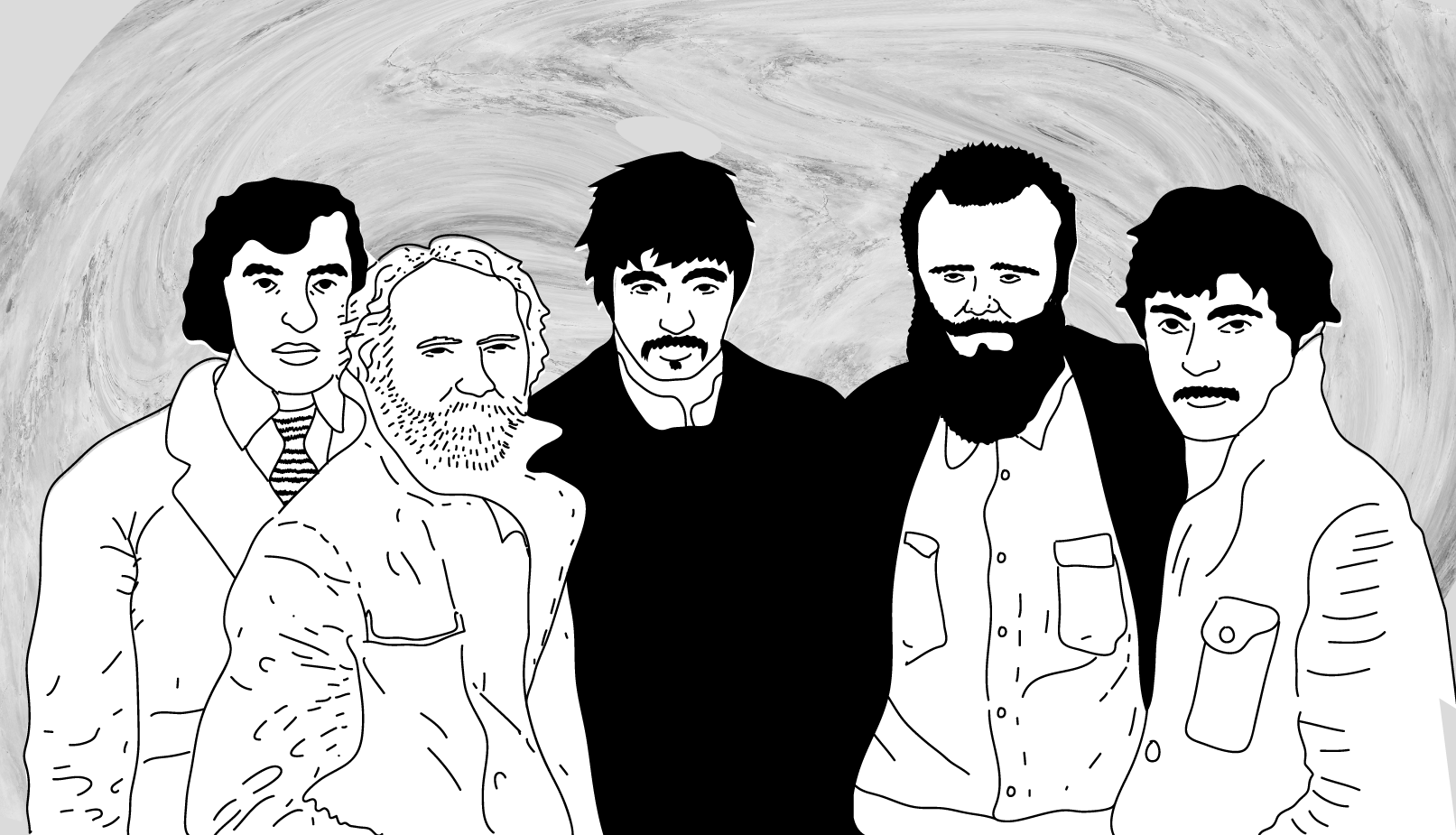How The Band went from supporting cast to legend
On Friday, the documentary Once Were Brothers: Robbie Robertson and The Band was released, cataloguing the rise to frame and subsequent breakup of The Band—one of the most influential bands of all time. Despite their status, they still remain relatively unknown compared to artists of similar scale, so sit back and get ready to learn about how The Band cemented their place in history.
In March of 1965, Bob Dylan released Bringing It All Back Home and changed popular music forever. Splitting the album between acoustic and electric performances for the first time, this felt like a betrayal of the folk roots that earned him the title of “voice of his generation.” His electric performance at the Newport Folk Festival that same year only cemented that fact.
Now a pariah from a large part of not only the folk music scene, but his very own fans, Dylan embarks on his first electric tour across the country. Before he takes off, he needs a backing band and his search takes him to Friar’s Tavern, a small club on Yonge Street in Toronto. There—for the first time—Dylan hears Levon and the Hawks play.
Before picking up the moniker of “The Band,” they had gone through a slew of names, most prominently a series that followed the standard “name of lead singer followed by name” format with lead singers Ronnie Hawkins and Levon Helm. It wasn’t until Dylan’s famous world tour in 1966 that the name by which they would be best known began making appearances.
Touring with Bob
Marketed as “Bob Dylan and his Band,” the tour would go down as one of the most memorable moments in the history of live performances. A disgruntled fan shouted “Judas” at Dylan towards the end of the show and his response was to turn to the band and demand they “play it fucking loud.” They proceeded by launching into a wildly raucous version of “Like a Rolling Stone.”
After the tour, Dylan got into a motorcycle accident that almost killed him and decided to take some time off away from the limelight. Enter Rick Danko, The Band’s bassist and one of the songwriters who offered up a home he rented in Woodstock. Little did he know that he just inadvertently created one of the most iconic settings in rock history: Big Pink.
Affectionately called so for the pink siding on the house, Dylan and the rest of The Band confined themselves to Big Pink for over a year, creating a multitude of tracks that would end up being released as bootlegs and gaining so much praise that Dylan decided to fully release them. Off the strength of that, The Basement Tapes have been gradually released over more than a dozen volumes.
Post-Dylan
In October of 1967, Dylan left Big Pink, and this is when The Band established their legend. Over the course of the next few weeks they wrote a collection of songs that would grow into one of the greatest folk rock albums of all time. When trying to pick a name, the one they had been known by throughout the entirety of their tour with Dylan just seemed right. So they stuck with it and the group from that point on was known as The Band.
Their debut record was a stunning homage to their creative fortress and allowed them to push their own sound and rustic, folky aesthetic. Music From Big Pink was an instant classic and featured one of the greatest songs of all time: “The Weight.”
Bewilderingly poetic and consistently grounded, yet over the top with the protagonists quest to simply do good, “The Weight” is an Americana in its most distilled form. Pure, unwavering, and crushingly honest, the album as a whole served as a launching point for their magnum opus.
Side Note: If there is anyone out there that thinks it’s “Take a load off, Annie” and not “Take a load off, Fanny,” get your brain checked because it’s broken. I will not be entertaining debate on this matter. You are simply wrong.
Now, back to their masterpiece. A year later, Big Pink had lost its magic, so they needed a change of scenery. From upstate New York, they trekked to the Hollywood Hills and began to operate out of the pool house of Sammy Davis Jr.
In September of 1969, just over a year after their debut, The Band released their eponymous follow-up and, from this, would cement themselves as one of the most important groups of the 1960s and ‘70s. The record is filled with classic songs like “The Night They Drove Old Dixie Down,” “Up on Cripple Creek,” “Look Out Cleveland,” and “King Harvest,” and Helm’s voice is just as resounding and attention-grabbing as it was on their debut.
The Last Waltz
On Nov. 25, 1976, after years of touring, the world of music stood still as one of the greatest farewell shows of all time went down in San Francisco.
Ronnie Hawkins, Bob Dylan, Eric Clapton, Neil Diamond, Dr. John, Joni Mitchell, Van Morrison, Ringo Starr, Muddy Waters, Ronnie Wood, and Neil Young were all in attendance along with The Band themselves. On top of that, the concert film was directed by none other than Martin Scorsese and went down in history as one of music’s most memorable celebrations.
Beef between band mates, legal issues, and power struggles are almost as synonymous with most groups as the music they make. But through that all, The Band stands as a pillar in American music and one of the most important contributors to the counter-cultural revolution.
Graphic by @sundaeghost
